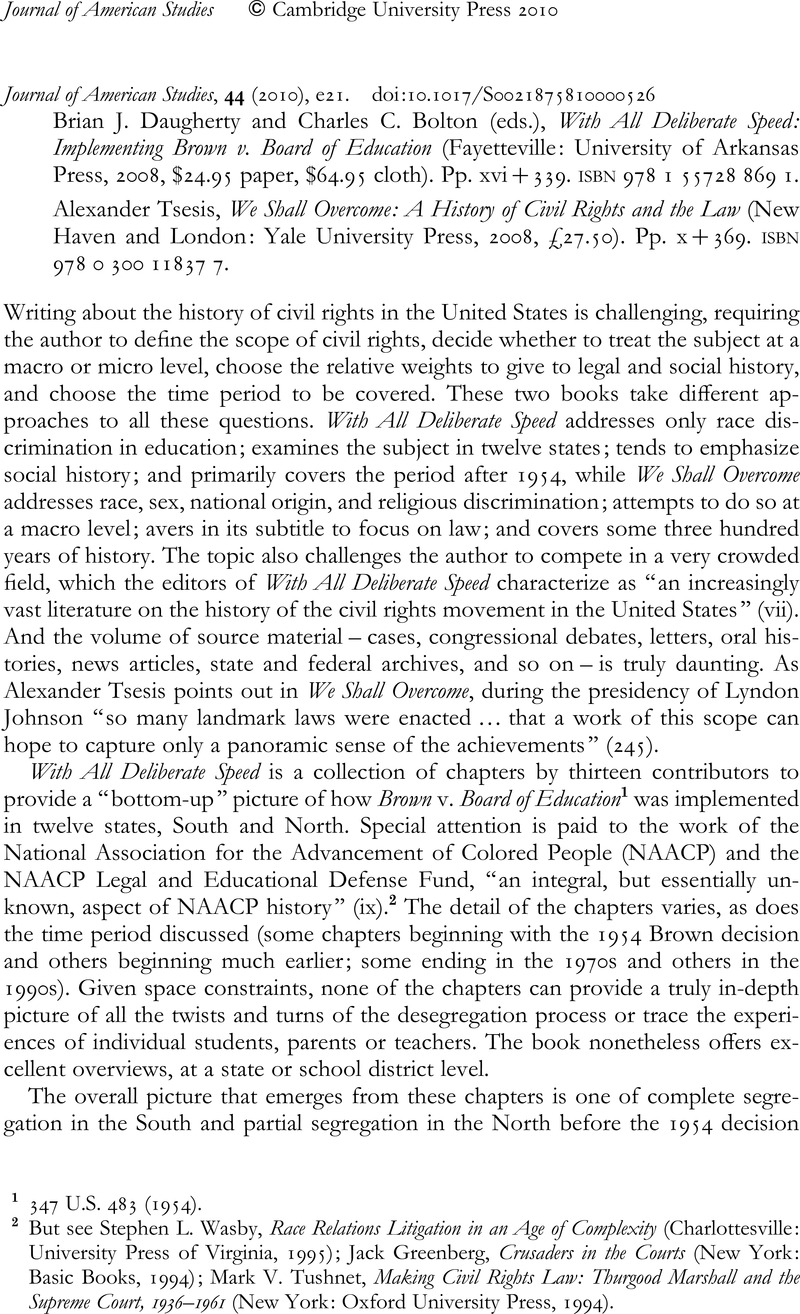No CrossRef data available.
Published online by Cambridge University Press: 01 March 2010

1 347 U.S. 483 (1954).
2 But see Stephen L. Wasby, Race Relations Litigation in an Age of Complexity (Charlottesville: University Press of Virginia, 1995); Jack Greenberg, Crusaders in the Courts (New York: Basic Books, 1994); Mark V. Tushnet, Making Civil Rights Law: Thurgood Marshall and the Supreme Court, 1936–1961 (New York: Oxford University Press, 1994).
3 He cites to Gary Orfield with Nora Gordon, Schools More Separate: Consequences of a Decade of Resegregation (July 2001), which was at the time available online.
4 Charles T. Clotfelter, After Brown: The Rise and Retreat of School Desegregation (Princeton University Press, 2004), 56, Table 2.1, traces the changes in segregation. Even in 1968, 77.8% of black students in the South attended schools that were over 90% black. However, in just four years of intensive enforcement of Brown, the percentage had plummeted to 24.7% in 1972. It has gradually grown to its present rate of 30.9%. But that means that almost 70% of black students in the south attend integrated schools. See also Daugherity and Bolton, 56, with slightly different figures: “In 1968–69, 32 per cent of black students in the South attended integrated schools; in 1970–71, the number was 79 per cent.” (Quoting Martin, Ruiz, Salvatore, Sullivan, and Sitkoff, Racial Desegregation in Public Education, 91).
5 60 U.S. (19 How.) 393 (1857).